OH, MAN. Here’s a fun thing about me: I currently have TWENTY-TWO CHAIRS inside my 1,100 square foot apartment, where I live alone. I absolutely do not need and cannot possibly fathom why or how one person can somehow amass TWENTY-TWO CHAIRS, but, well…I just love them. (To be fair – and also to maybe prove that I am mostly sane – I am in the midst of cutting ties with about half of them because I’d like to enjoy activities like “walking without bumping into something” and “opening my closet door without completing a round of calisthenics.”)
But all this chair hoarding means one thing: when it comes to seating, I know my stuff. So today, I want to walk you through the actual names of 20 iconic chairs – some you’ll know, and some may be new to you – along with some fun facts, so you can talk to your friends like you’re one of the experts on Antiques Roadshow. (“Please stop talking about furniture all the time,” your friends will beg, but they’ll love you anyway, because that’s what friends are for.) And to be clear, we’re NOT talking Adirondack chairs, or Peacock chairs, or Butterfly chairs, or any of the chairs that everyone can name – these are the design deep cuts. YOU’RE GONNA LEARN SOMETHING AND YOU’RE GONNA LIKE IT. (I hope.) Let’s go, yeah?
Up Series 2000
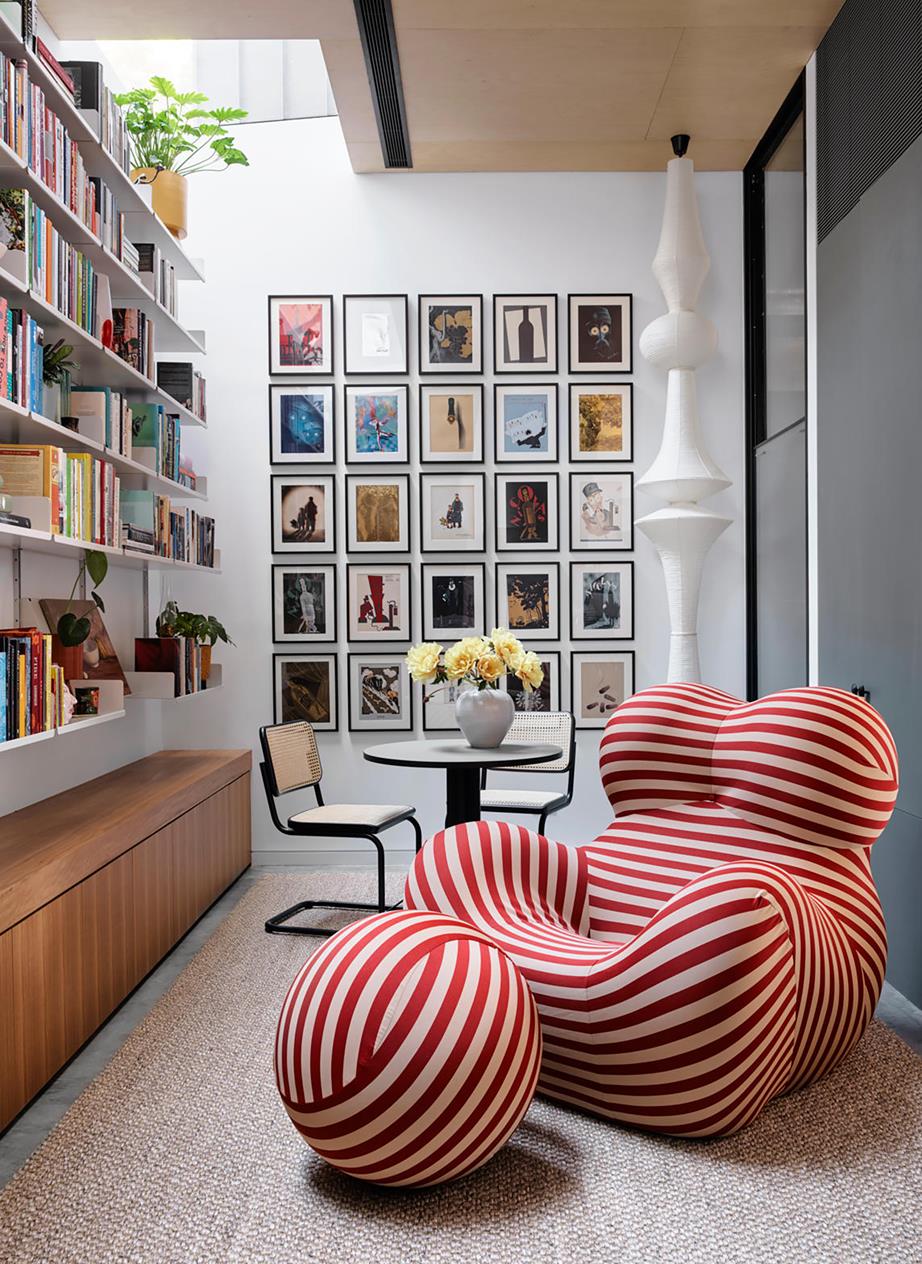
Starting this off with one of my all-time favorites: the Up Chair (or the Up5, if you want to get really specific), which was designed by Gaetano Pesce in 1969. It’s so modern and fun and cheery and playful and…oh wait, it was actually designed to look like “a female figure tied to a ball-shaped ottoman, symbolizing the shackles that keep women subjugated.” DIDN’T SEE THAT COMING, DID YA?
Womb
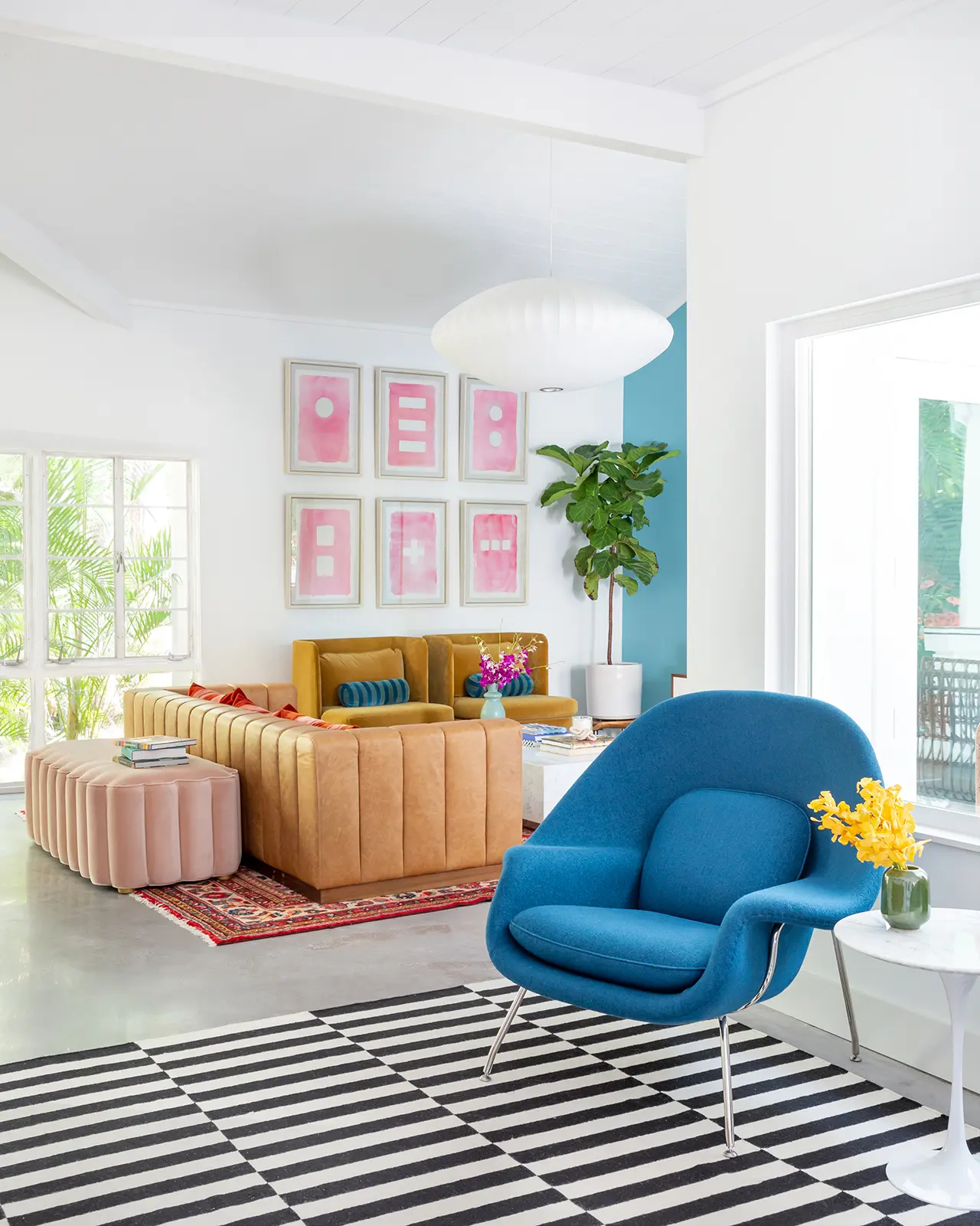
Some fun history: Eero Saarinen (yeah, like, the guy who figured out the whole “tulip base” thing) first designed the Womb Chair at the request of Florence Knoll, who was tired of sitting in “one-dimensional” and “narrow chairs.” “I want a chair I can sit in sideways or any other way I want to sit in it,” Knoll said, and like…girl, SAME HERE. Florence gets it, you know?
So the Womb Chair – originally just called the “No. 70” – was finished and released in the 1940s, but it didn’t adopt the now-famous nomenclature until Saarinen hit the media circuit with this talking point: “It was designed on the theory that a great number of people have never really felt comfortable and secure since they left the womb.” NOW YOU KNOW.
Klismos
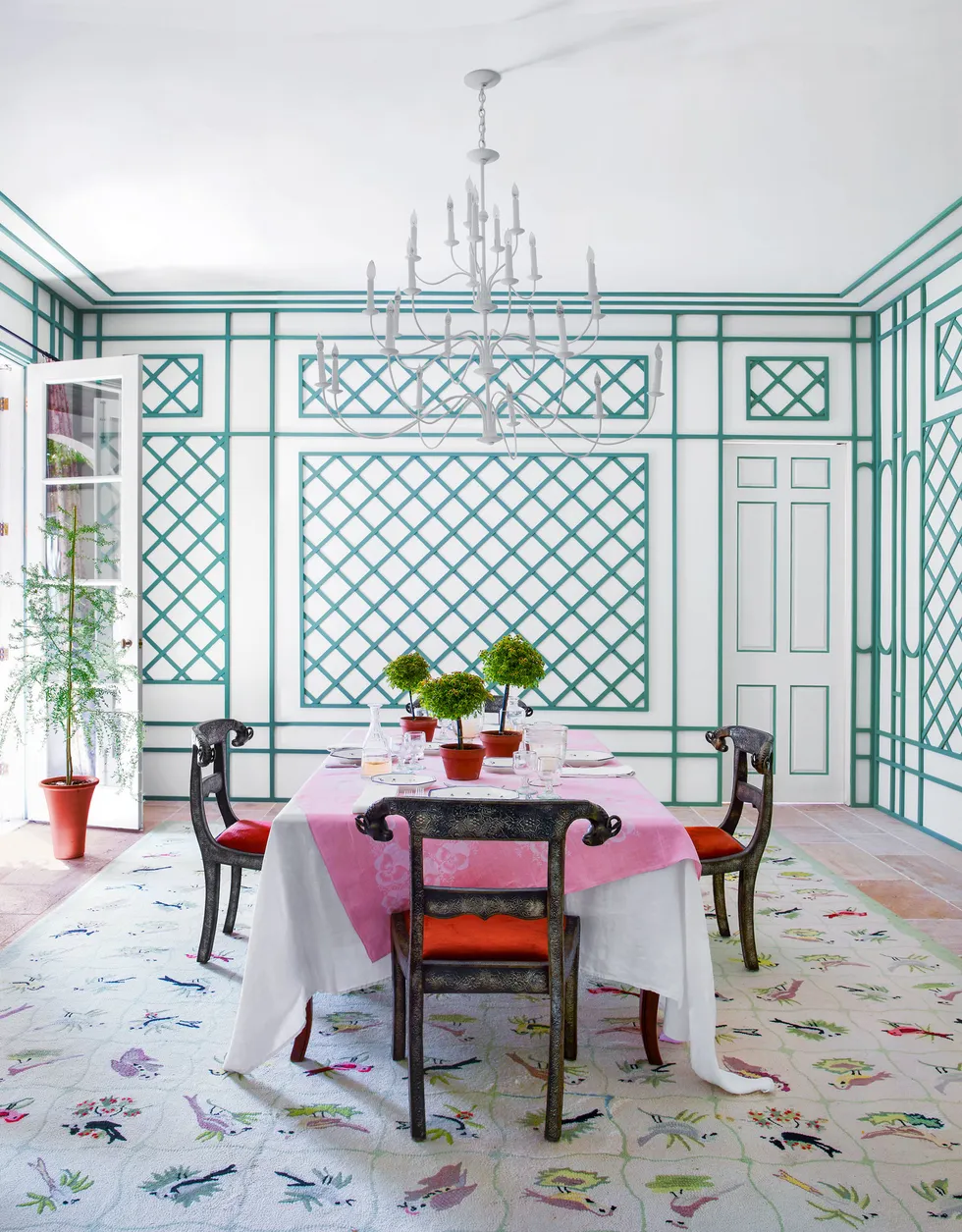
KLISMOS! I’m sure you’ve seen them in the wild for years, but the actual name may be new to you. Think of Klismos chairs like the Windsor chairs of ancient Greece – there are tons of different styles and colors and cuts, but the actual shape (flared leg, curved back, concave backrest) remains the same. This type of chair dropped out of favor for over ~2000 years (NBD), but Klismos popped back on the ~design~ scene during the 18th-century neoclassical movement and slowly worked their way back into homes around the world. (If you really wanna break your brain this morning: it’s kind of wild to imagine chair shapes from today still being popular in the year 4022, right?)
Ekstrem
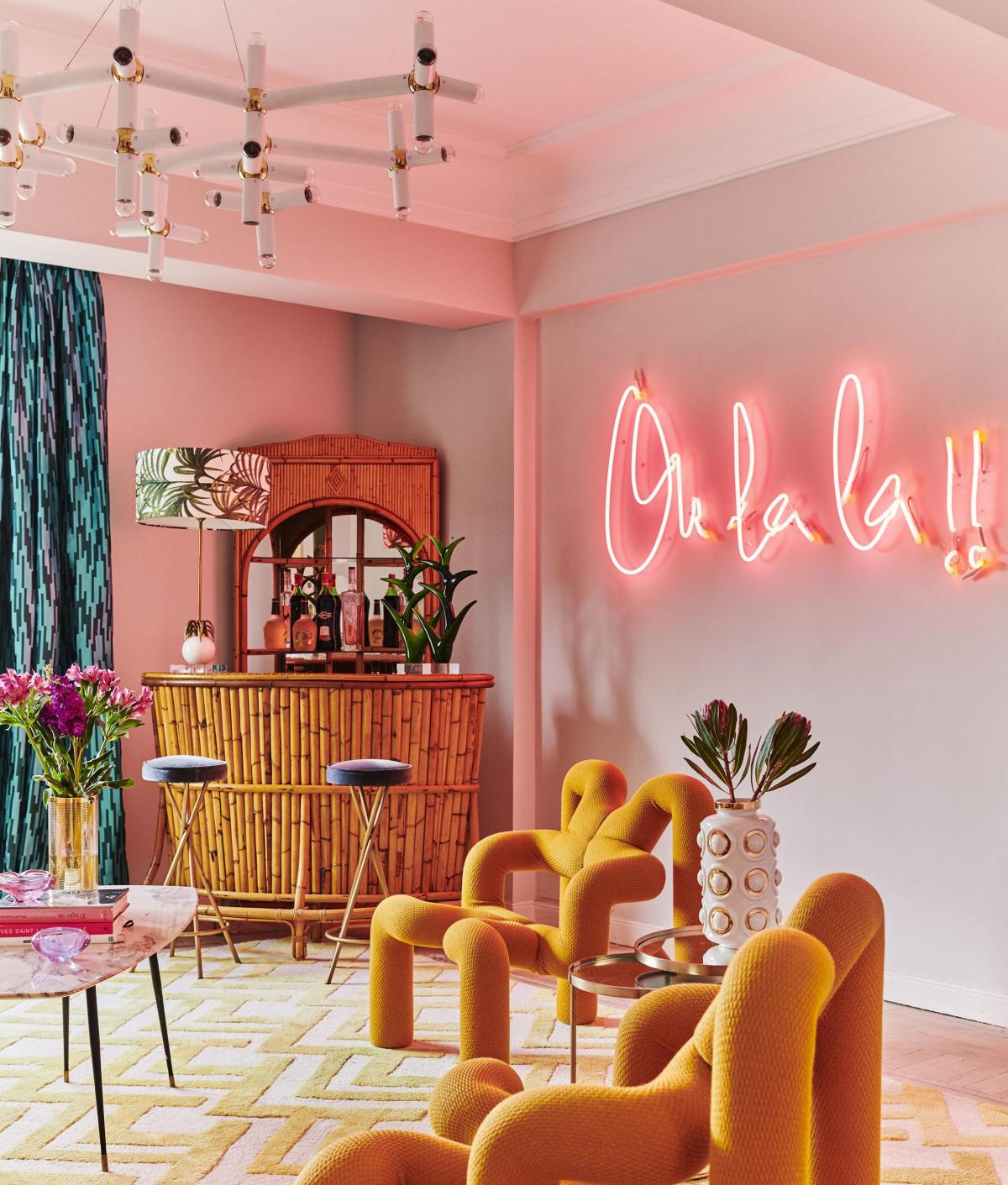
I know that Ekstrem chairs are a bold statement piece that can inspire some pretty adverse reactions – to no one’s surprise, I am on team #obsessed – but are you ready for the plot twist? THEY WERE DESIGNED TO BE ERGONOMIC. The designer, Terje Ekstrøm, wasn’t just trying to lean into the 80s postmodern movement, as many assume – he actually made the prototype for the Ekstrem in the 1970s in an attempt to create a chair that’d be BETTER for how people actually need to sit, instead of relying on how chairs of the 40s and 50s allowed people to sit. It took him about 12 years (!!!) to find a manufacturer willing to take a chance on the Ekstrem, and now they’re an iconic piece of design history.
Etcetera
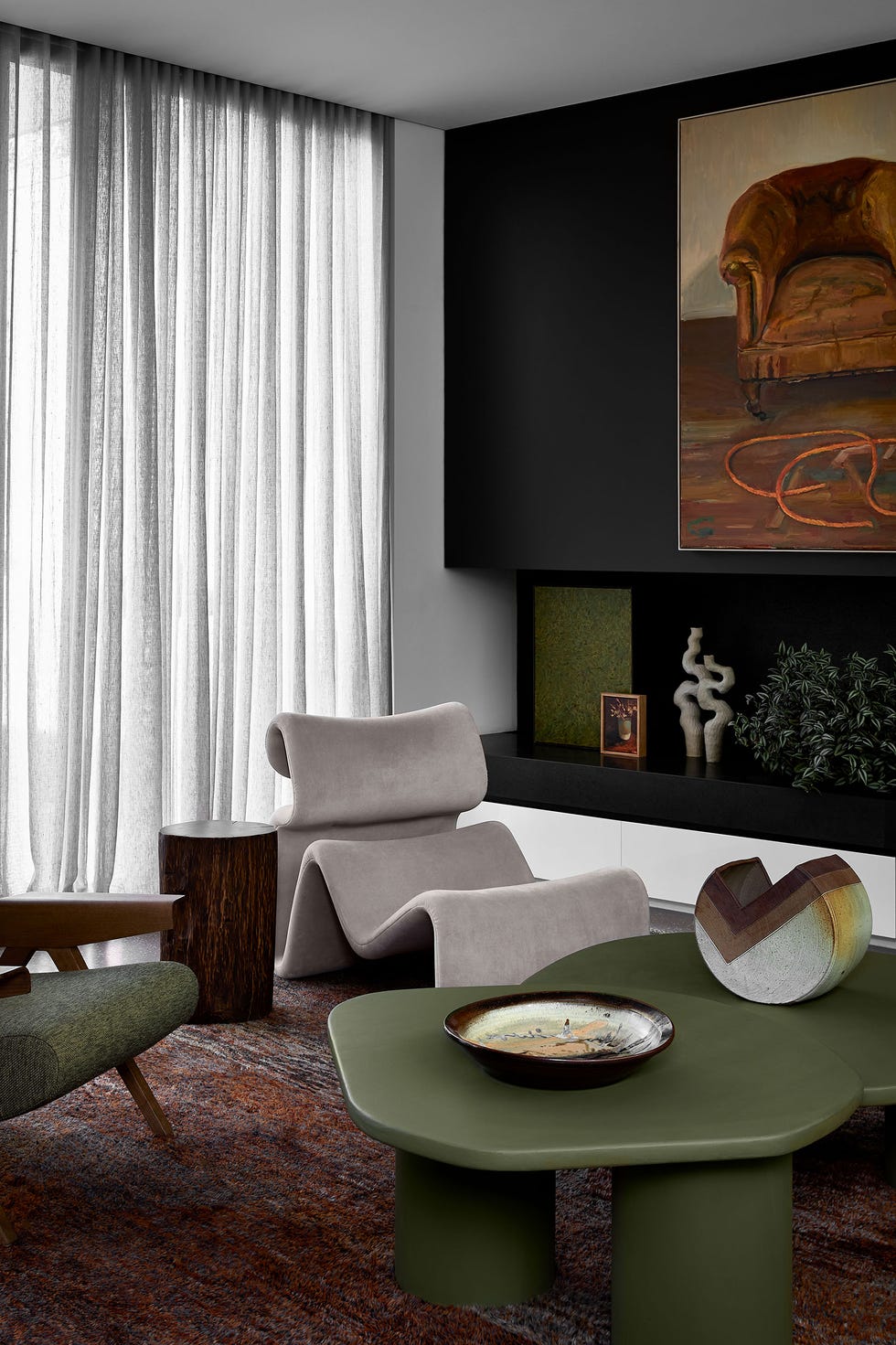
You know when people just like, have it? (Like how Jonathan Safran Foer, a guy who didn’t even want to be a writer, turned his Princeton senior thesis into one of the biggest debut book deals of all time?) That’s what happened with the Etcetera chair – the designer, Jan Ekselius, created a prototype as part of a workshop at the Royal College of Art in London in the 1970s, and it quickly became THE hot ticket item of the decade and a go-to piece for decorators worldwide. (Above is the “lounge chair” version – it’s my personal favorite – but if you ever see an Etcetera chair with a more compressed shape, that’s the traditional “easy chair” option.)
Panton

This may be one of the most ubiquitous chairs on the list – we’ve all seen the cheaper knockoffs (usually marketed as “S chairs,” because of the shape) AND the newer wicker interpretations, right? Let me fill you in on some fun backstory (you know, so you can annoy your friends by spouting off esoteric design facts all the time): in the late 1950s, plastic was picking up steam in postwar Europe and Verner Panton was OBSESSED with the new material, because it could be moulded into any shape AND mass-produced. He really wanted to figure out how to make a chair that was just one piece, but it took 15-20 “no’s” from other furniture manufacturers before Vitra decided to take the plunge and produce Panton’s dream chair. It took 10 prototypes to nail down the construction – plus, the actual materials used in each chair shifted a bit as technology advanced) – and now there’s a huuuuge secondary market for all kinds of rare, vintage Panton chairs.
Camaleonda

Fun fact: Mario Bellini’s Camaleonda sofa was one of the first-ever modular sofas to break through to the mainstream! It actually made its debut in a 1970 exhibition at MOMA in New York, so it was in high demand by the time it was actually brought to market a few years later. It was originally only in production through 1979, but it was brought back in 2020 and is now being manufactured once again. (PS. I’ve been taking Duolingo Italian for about a year, and can finally identify that “Camaleonda” is a portmanteu of “camaleonte,” which means “chameleon,” and “onda,” which means “wave.” Thank you, Duolingo owl, for bullying me into learning vocabulary words every day.)
Pumpkin
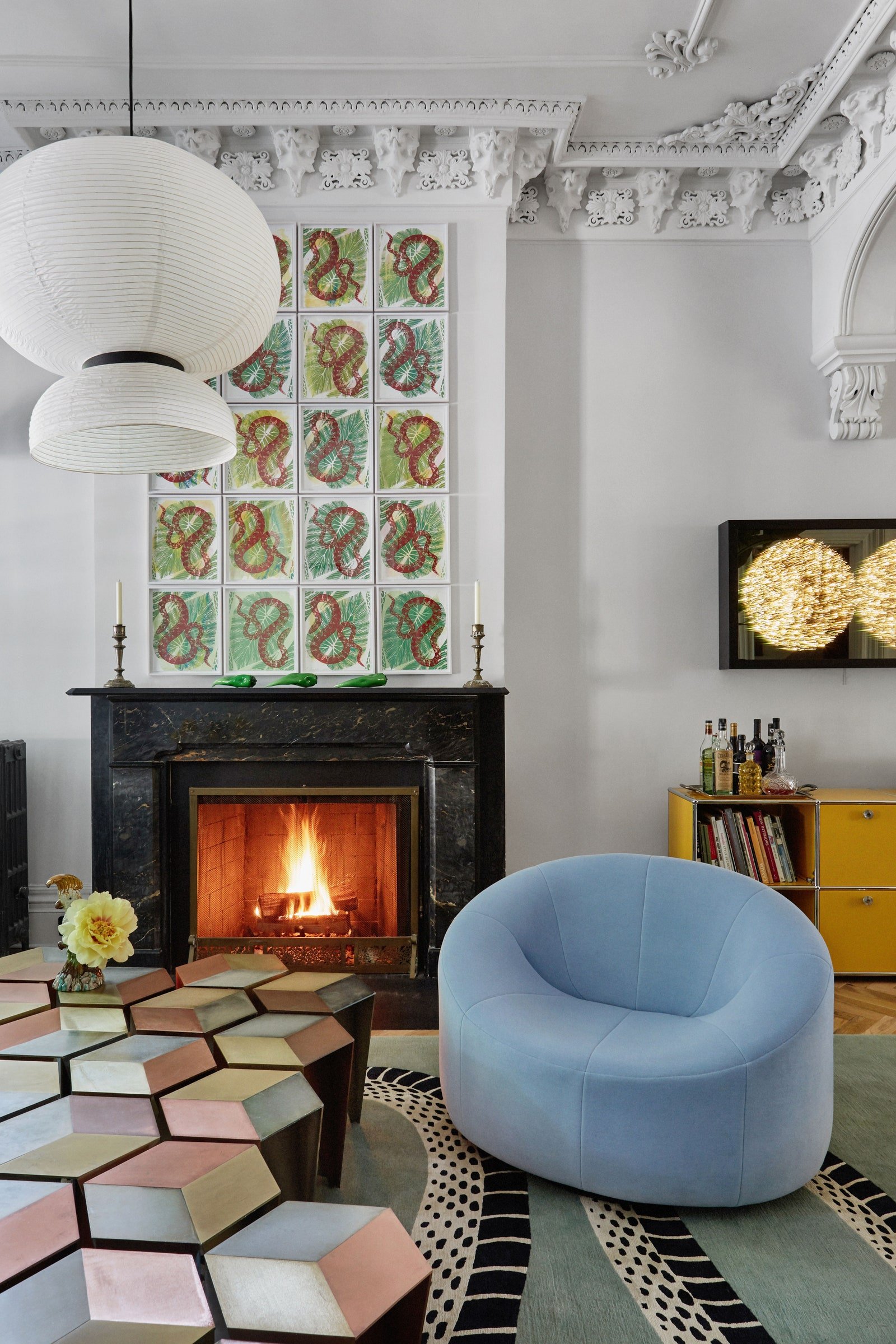
This is the first of a few of Pierre Paulin designs and it has a GREAT story. In the late 1960s, the French government wanted to breathe new life into a slowly-dying design industry, so the Minister of Culture ended up hiring Paulin to design the President’s private residence in Elysée Palace. (Can you imagine anything like this happening in America today? I can’t.) At the time, the chairs were referred to as “Elysée chairs” (you know, because of the location) and after becoming a cult favorite, the Pumpkin chairs we know and love were finally reissued in 2007.
Jaymar
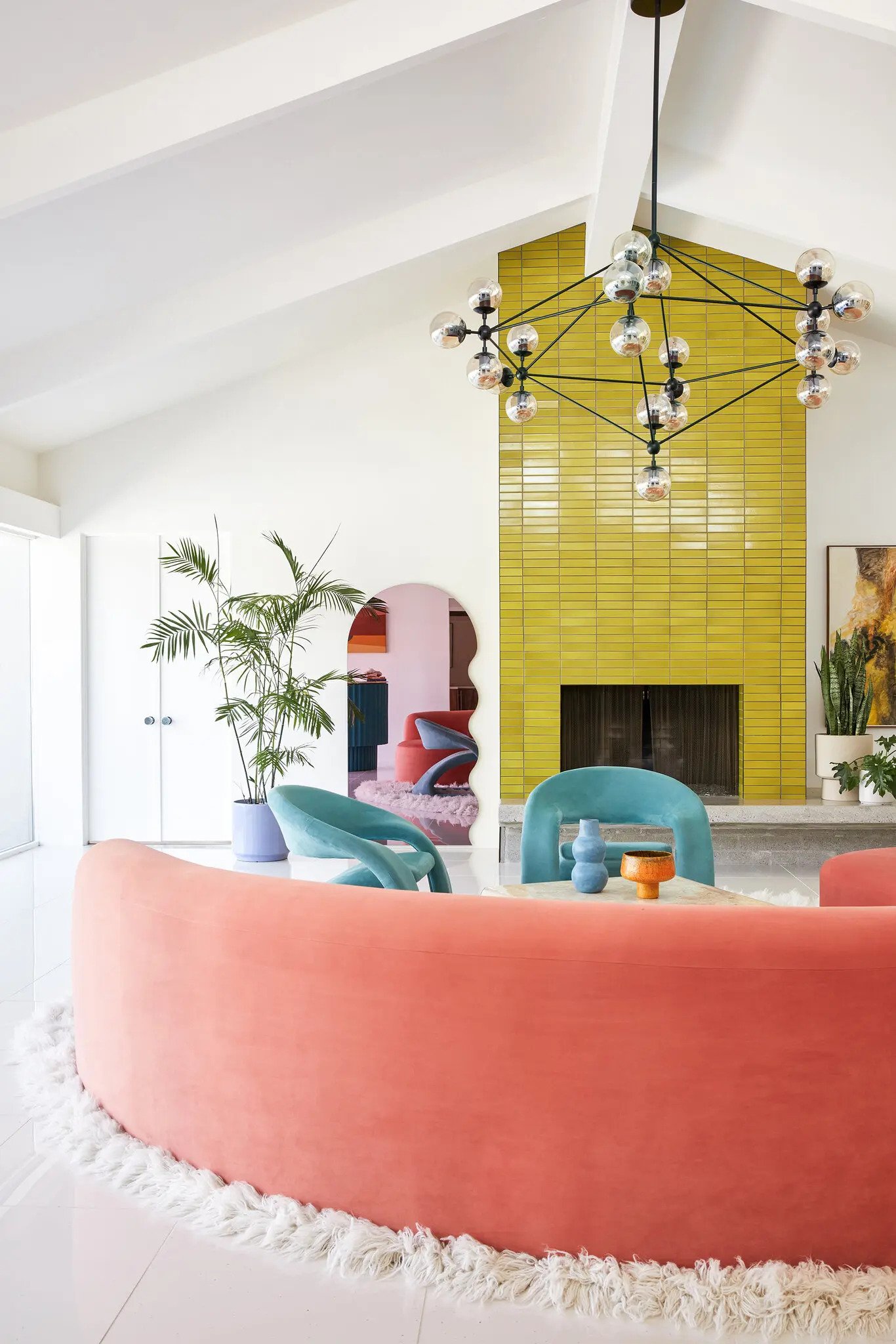
First: I have one of these in my house, guys! Mine is clad in a leopard-print fabric (“shocker,” said absolutely no one) and it’s UNBELIEVABLY comfortable (in addition to being my cat’s favorite place to snooze). Jaymar’s a Canadian brand that’s been around since the 1950s, but these 1990s-era chairs – sometimes referred to as “cantilever chairs” or “Jaymar tongue chairs,” though they’re inspired by the work of Louis Durot – picked up a TON of steam within the last 4 years as postmodern-style furniture has returned to the mainstream. Jaymar chairs are still kind of affordable (mine was about $350 in 2019, which is a steal compared to some of the earlier $5,000-$10,000 chairs!) but becoming more and more popular/valuable by the day. If you’re into this style of furniture (and you like, actually want to enjoy sitting on said furniture), this is a great option.
P3
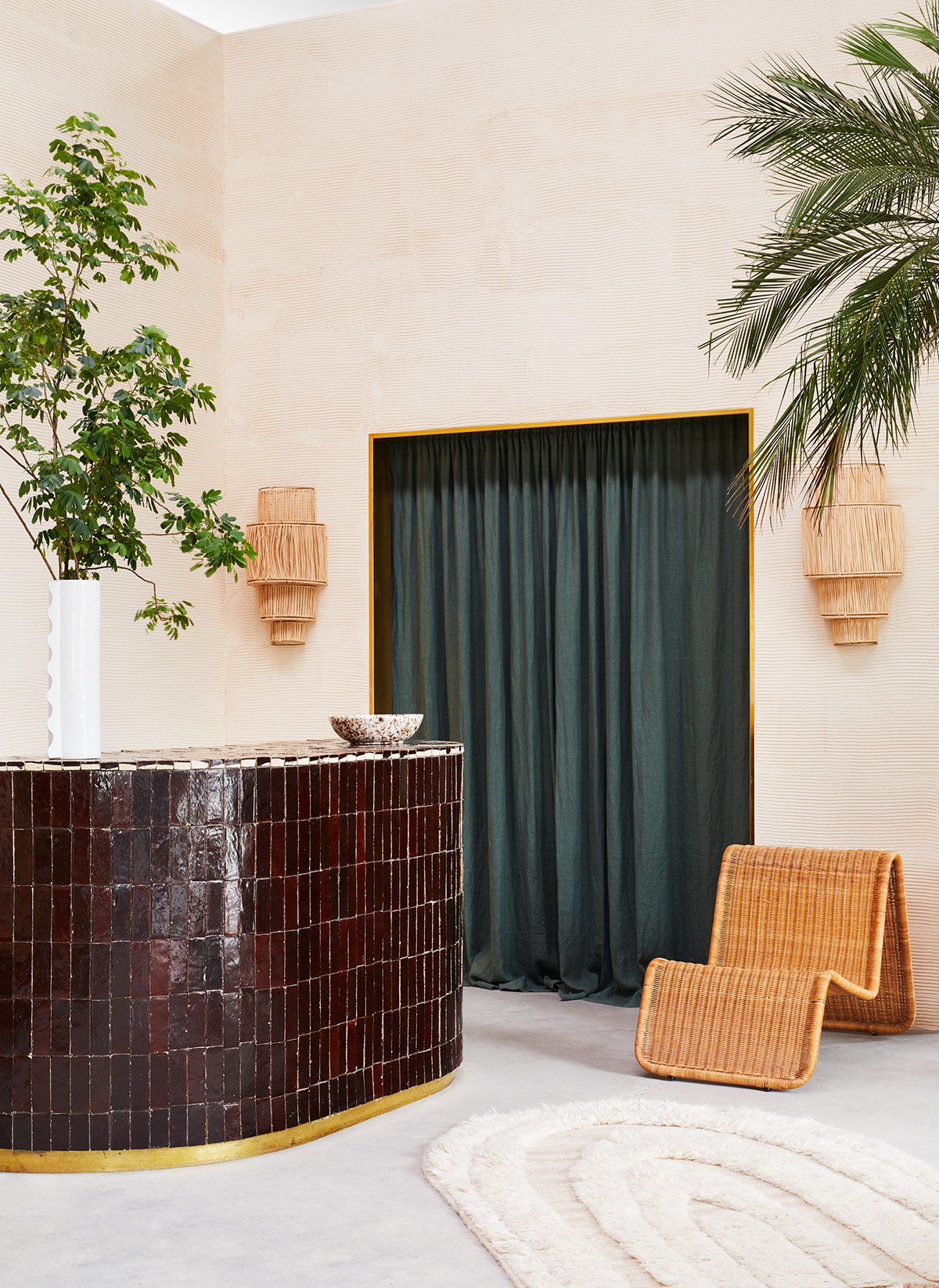
So simple, so striking, SO GOOD. The P3 was a 1960s design by Tito Agnoli, a Peruvian-born architect who moved to Italy for school and worked under a few iconic industrial designers before hitting his stride as a furniture and decor designer. The P3 was designed to be ergonomic (can you believe how many of these chairs were intended to be both beautiful and comfortable?) and it’s stood the test of time – we’ve been noticing a huuuuge uptick in the wicker/rattan trend, so I have a feeling you’re about to see a LOT of P3s in high-end house tours over the next year.
Togo
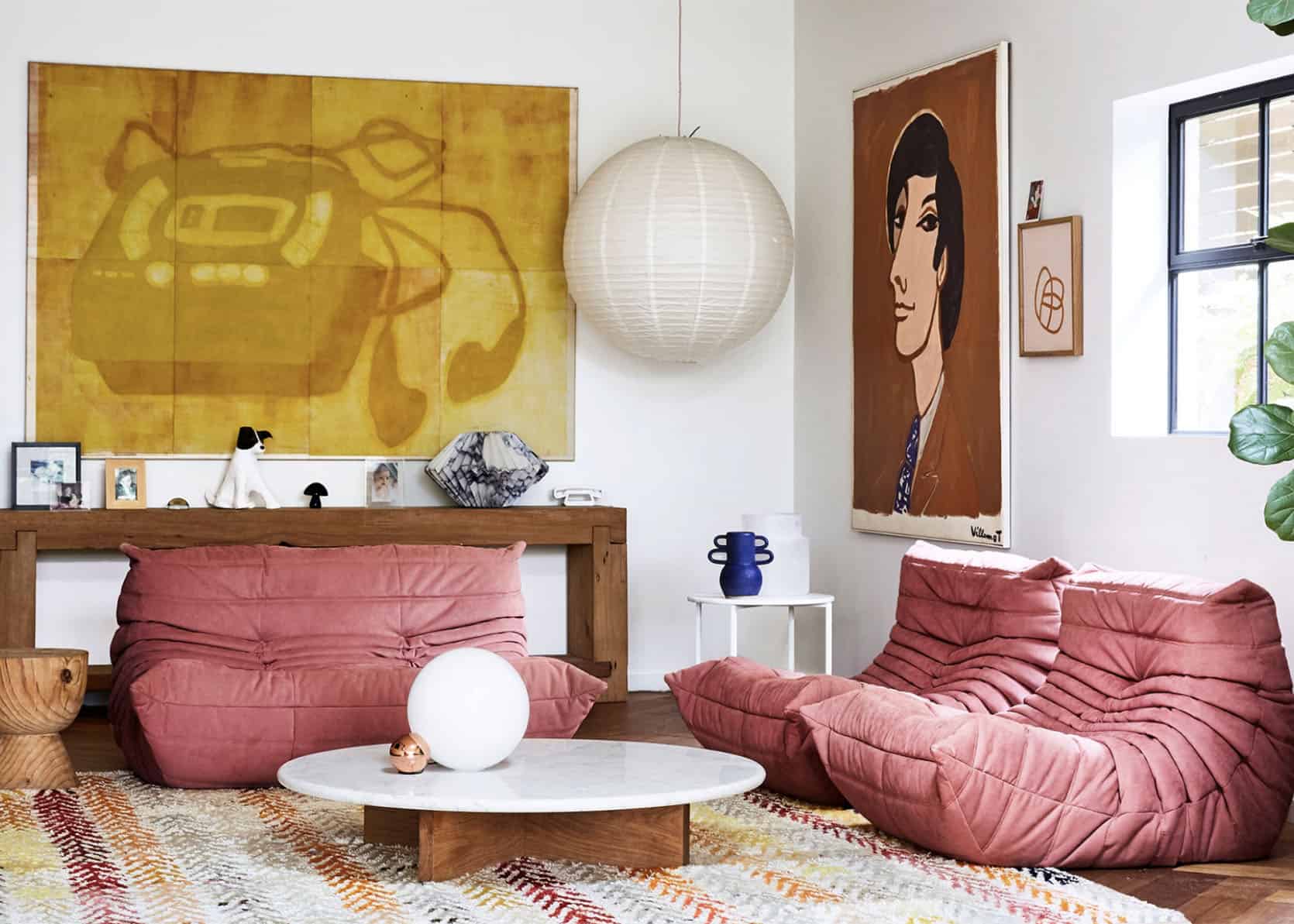
Ah, yes, the internet’s current cult obsession. (When your furniture has a hashtag, you know you’ve made it. #togotuesday is VERY fun on Instagram.) Togo debuted in 1973, won a bunch of prestigious design awards, and it’s been manufactured and sold ever since – that’s a SUPER rare feat (in case you hadn’t clocked a bunch of the earlier pieces going in and out of production). Michel Ducaroy, the designer, once said his inspiration was “a tube of toothpaste folded on itself like a tuba and fixed at both ends,” while the Togo was also described as having “a crumpled, ‘newborn’ appearance with Shar-Pei wrinkles.” Seeing as I, too, could be described as a “crumpled newborn with Shar-Pei wrinkles,” I have a real soft spot for this one.
LCW

Something classic for ya! We all know the eponymous Eames chair, but I wanted to put a name on this little guy – say hello to the LCW. (That stands for “Lounge Chair Wood,” which is a hilarious and concise abbreviation that I love.) Ray and Charles Eames (a married couple, not brothers!) have a fascinating and prolific history, but in the 1940s they were manufacturing plywood leg splints for the US armed forces during World War II (plywood was lighter and more pliable and comfortable than metal, which had been used previously). After shipping nearly 150,000 splints and mastering the plywood bending-process, the duo resumed work on the LCW…and the rest, as they say, is history. The chair came to market in 1946 as a near-instant hit (it was lighter and sleeker than all the popular upholstered chairs at the time), was sold until 1957, and was brought back into circulation in the mid-1990s. NOW YA KNOW. (PS. The man I have a crush on sent me like 5 pictures of LCW chairs – including this one! – after I mentioned them, which obviously made me have a BIGGER crush. I’m living my design blog dream right now!!!)
Groovy

Our guy Pierre Paulin is back with another iconic furniture design!!! He created the first version of this chair (technically called “the F580”) in the 1960s, and then spent nine years tweaking the design till he released the official Groovy chair in 1973 (whose official name is “the F589,” in case you’re wondering!). Can you believe ONE GUY had so many incredible and groundbreaking designs in that noggin?
Chiclet

Oh man, these are modern and fun and cheery and playful and…JUST KIDDING, I wouldn’t do that to you again. There’s no catch here! The Chiclet (probably the most well-named chair in this bunch, I think – it just fits, you know?) was designed by Ray Wilkes in the 1970s, and it was JUST recently reissued. Wilkes once said this about his design process, which I love: “The fact is, I like total simplicity. It’s the philosophy of my life. An architect once told me that I was a true minimalist. And minimalism isn’t just straight lines – the most important thing is the form, and the simplicity of making it.” BIG FAN, Y’ALL. (PS. Wilkes’ Rollback chair is my DREAM desk chair and if anyone has one, I’ll buy it from you. I may need a payment plan, but it’d be worth it.)
Cesca
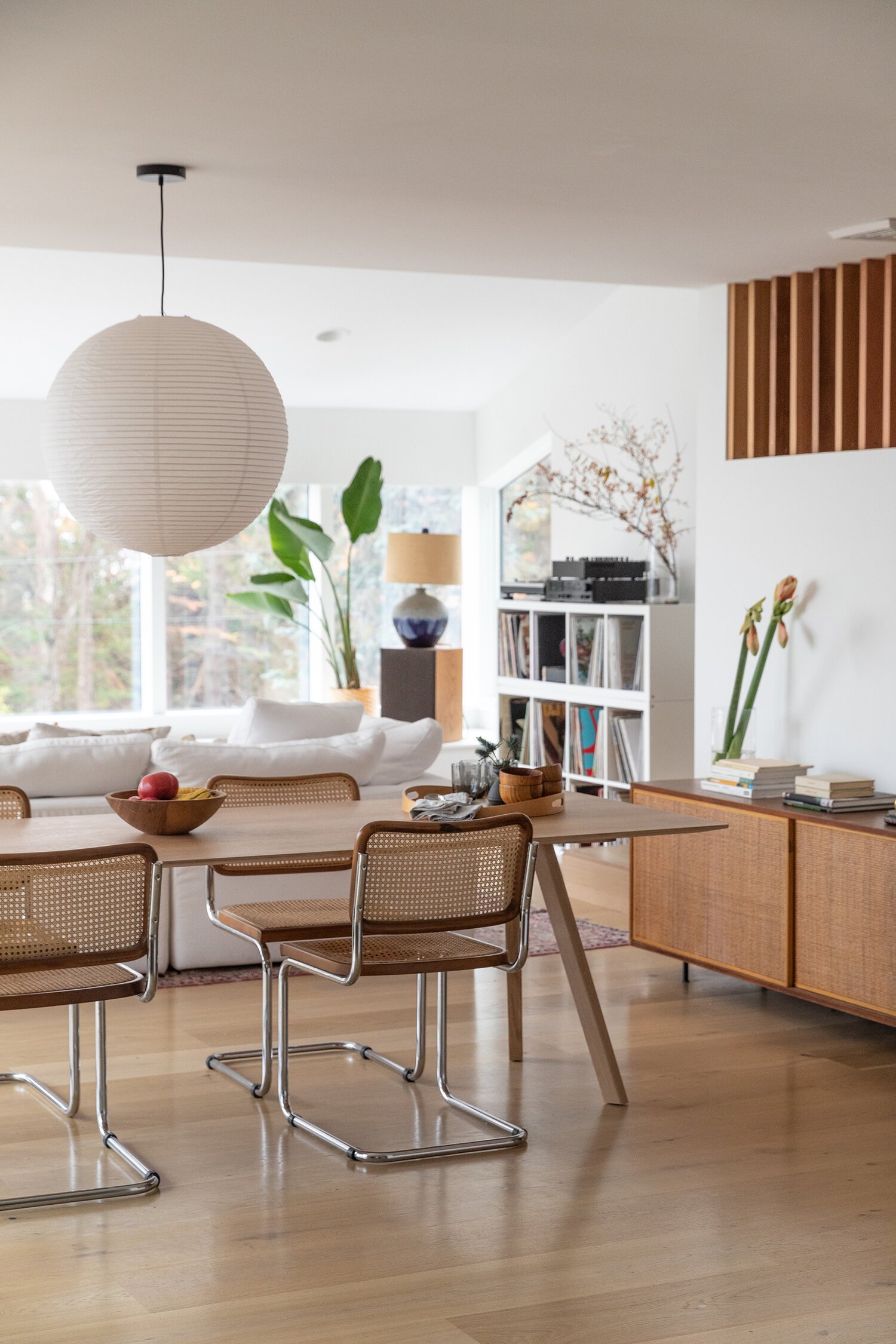
Get ready for a surprise: This chair was first created in the 1920s. WHO KNEW, RIGHT? It’s still so modern and fresh – the MoMa has described it as one of the 10 most important chairs of the century – but it was actually first manufactured by Michael Thonet (spoiler: there’s a 90% chance you’re pronouncing his name wrong) based on a design by Marcel Breuer, who was SUPER inspired by the construction of his bicycle. The name “Cesca” didn’t come along until the 1950s, though, when a new manufacturer named the chair after Breuer’s daughter, Francesca. CUTE, RIGHT?
Clam
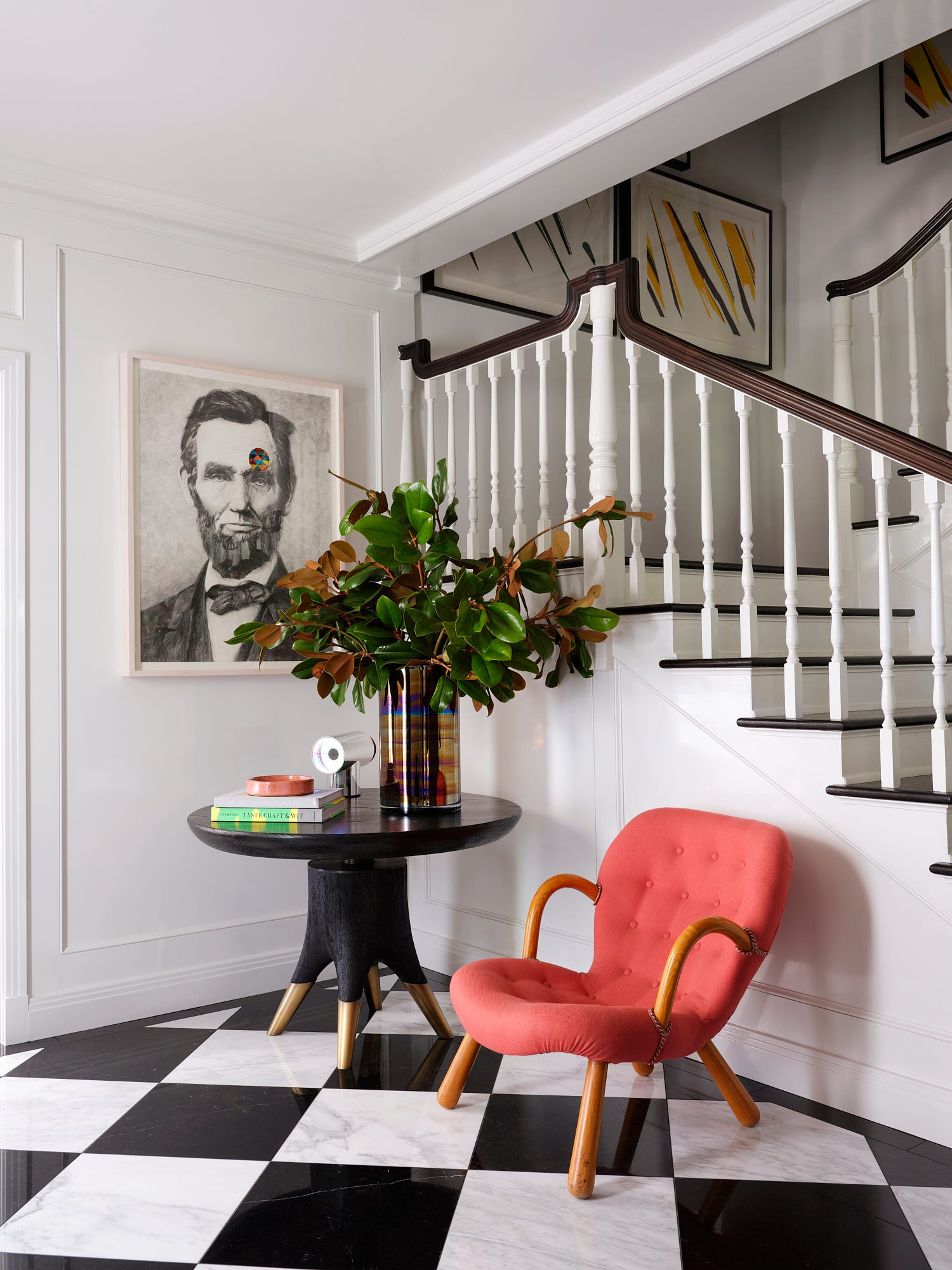
OH MY GOSH. Get a load of those little baseball bat-lookin’ legs, guys! This is another one of my favorite stories – for a really long time, NO ONE KNEW who the heck had designed this chair, and it was selling at auctions for pennies (spoiler: pairs of these chairs are now selling at auctions for like, a downpayment on a house. Maybe even a full house, depending on where you live, if houses are sold for $220,000, which is how much a pair of these chairs went for in 2013!!!).
After a lot of research and years of misattribution, someone finally figured out that the Clam chair was designed in 1944 by Philip Arctander, a random Danish architect who worked on affordable housing projects. (When asked about Arctander, a prestigious auction house expert had this to say: “He’s known for basically nothing at all in terms of design.”) Does that make anyone else literally laugh out loud? Like, a totally normal guy is accidentally responsible for one of the most sought-after chairs in the design world. WE LOVE TO SEE IT.
Bočan

BEAUTIES. Remember the Pumpkin chair’s political history (with the President of France, and all that?) – well, these have a similar pedigree: Czech architect Jan Bočan designed these chairs for the Czechoslovakian Embassy in Sweden in the early 1970s. We’ve seen this curvy cane and bentwood silhouette pop up more and more frequently over the past year or two, as Bočan chairs can shine in both pared back, neutral spaces and in bold, art-deco inspired rooms.
Wiggle
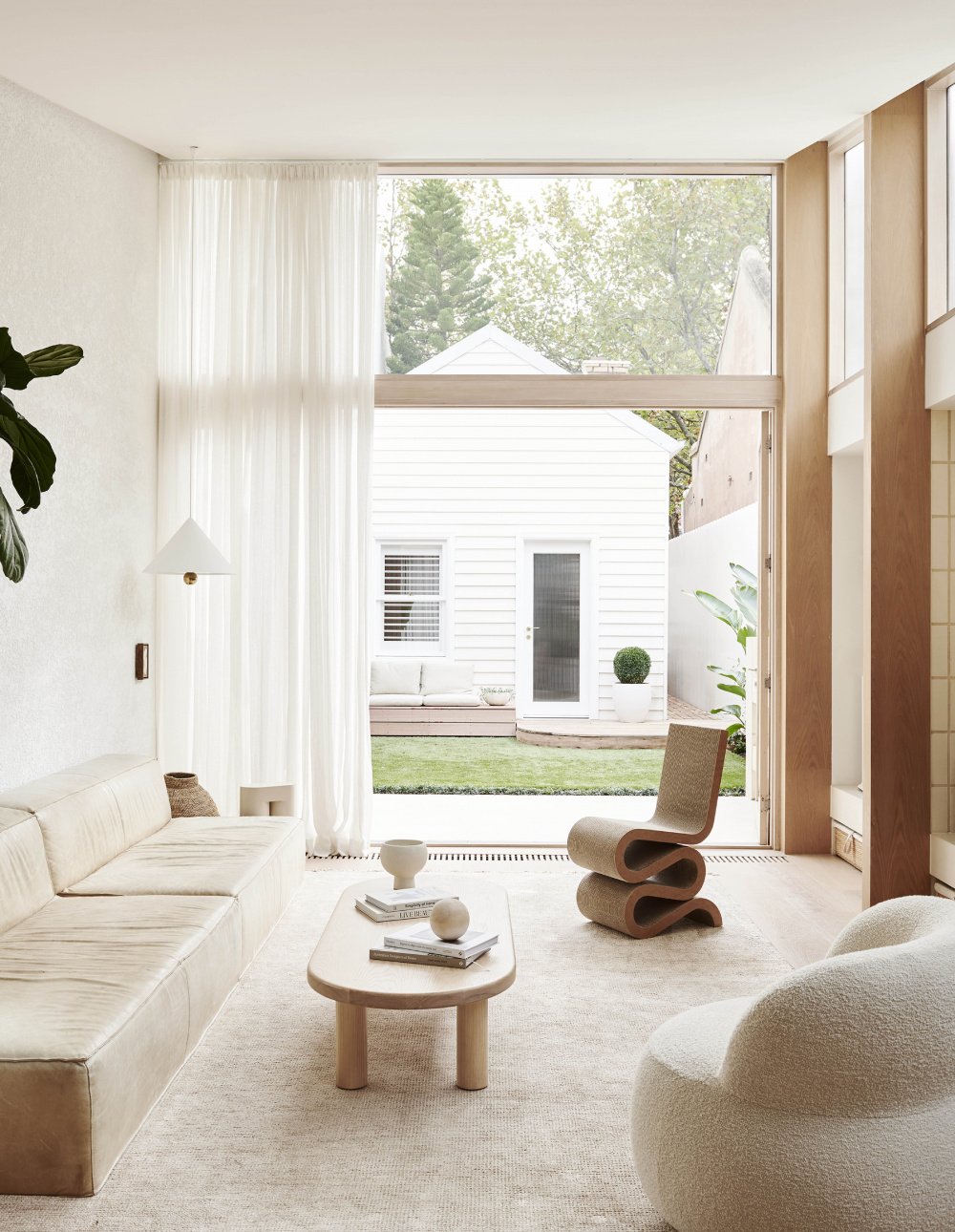
What do you do when you’re hired to design an artist’s studio on, uh, basically NO budget? You figure out how to make furniture out of corrugated cardboard – or, at least, that’s what Frank Gehry did, after stumbling upon piles of cardboard outside of his office. (The original version? Affordable and recycled. The new version? A liiiiittle less affordable, if you catch my drift) Gehry spent 3 years working on his cardboard collection, which he called “Easy Edges,” but he eventually stopped production and ceded the rights to the Wiggle chair as he felt it was overshadowing his architectural work. The more you know!
Rey

Let me set the scene: you’re on Jeopardy, and you’re answering the last question (you know, like, the one where you have to write in the answer?). You’re ready to put it all on the line, and whoever is hosting now says the following: “This chair, designed in 1971, is the most successful Swiss chair of all time.” You know what would happen? YOU’D WIN, because you’d write in “What is the Rey chair,” and you would have been so confident in that answer that you would have wagered all your earnings (it was already a lot, because you’re very smart to begin with), and now you’re a hometown hero. Seriously, though – the Rey chair, designed by Bruno Rey, is simple and iconic. It’s minimalist and clean, but still trend-forward, which is such an impressive balance to strike. (When in doubt, this is a GREAT go-to option for dining chairs.)
Soriana
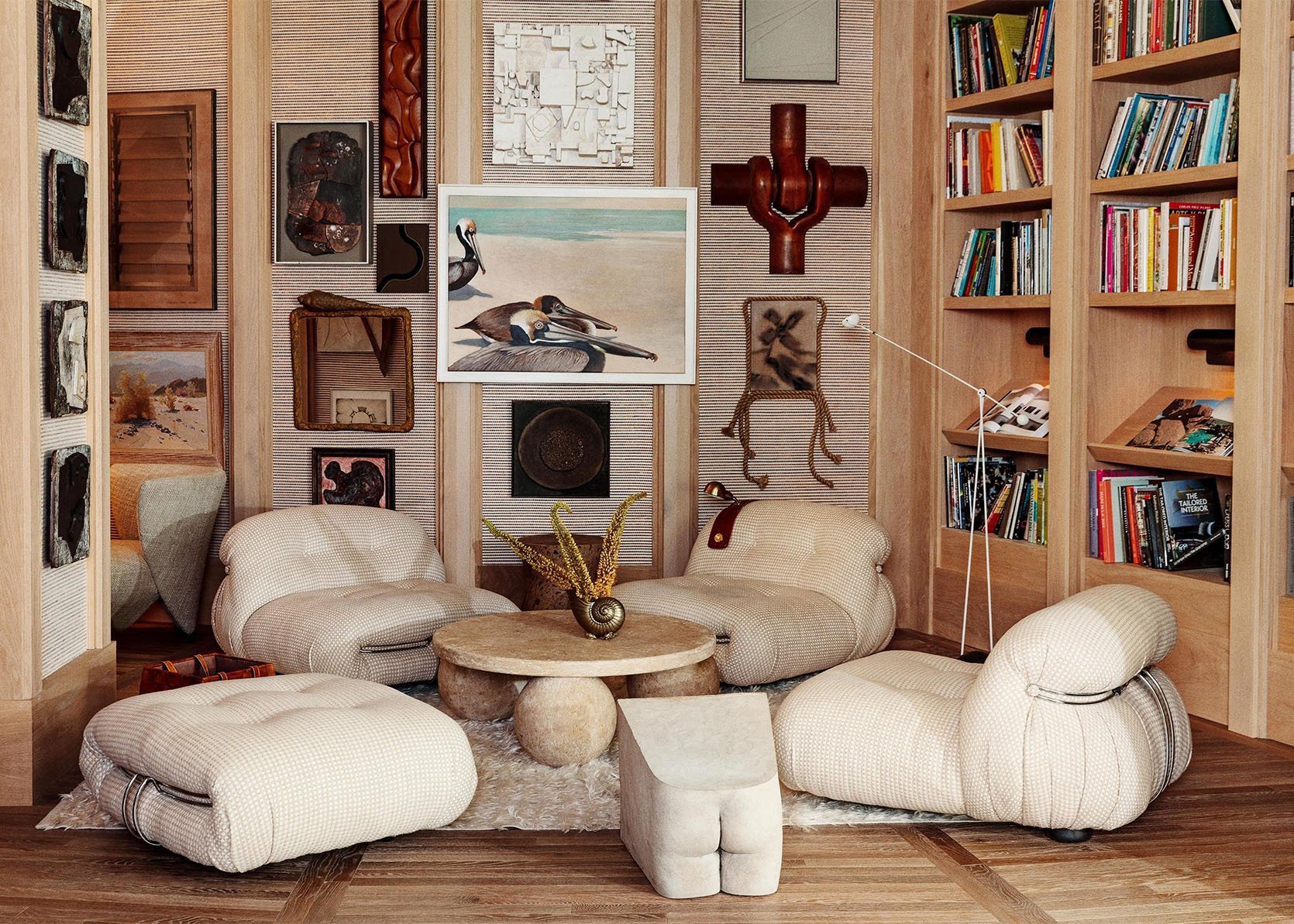
How could I close out a post without a photo of the Santa Monica Proper, which is basically like Xavier’s Gifted School for Youngsters but for famous chairs? (If you’re like, “Hey lady, what the heck are you talking about” – that’s the X-Men school where all the superheroes learn stuff, and if it’s any consolation, I also had to google what it was called because I didn’t want to write “it’s X-Men school for famous chairs” like a dope. MY POINT: Basically every famous chair is in the lobby of the Santa Monica Proper.)
TO THAT END: The Soriana chair was born out of urgency. Tobia and Afra Scarpa (another famous design couple!) got a call in November, asking them to have a new chair ready for Cassina booth at the Cologne trade show in January. They came up with a piece of furniture that’s ALL foam, held together solely by the upholstery and structurally supported by the small metal frame, and ended up winning an award for its “visual complexity achieved with simplicity.” Sometimes things just pan out, you know?
OKAY – I’ve shared 20 chairs and I’m already pushing 3,000 words, so I’m going to wrap it up here today. (Do I have another blog post draft with even more iconic chairs raring to go in our backend? OF COURSE!) There’s nothing I love more than talking about vintage furniture – “duh,” said everyone – so if *you’re* ready to gab some more about design history, then *I’m* ready to rumble with ya. In the interim – were any of these 20 new to you? (Was it Klismos? I have a feeling that may be the frontrunner when it comes to the whole “chairs I’ve seen but didn’t know the name of” thing.) Do you have one of these at home? Do you like it as much as I love my Jaymar chair, or is it more of a “look but don’t touch” thing? LET’S TALK ABOUT IT ALL, OK? xx
Opening Image Credits: Design by Kelly Wearstler | Photo by The Ingalls | via Design-Milk
THIS POST WAS ORIGINALLY PUBLISHED HERE.


